INTRODUCTION
Surgery is the only curative treatment for gastric cancer with the ultimate goal of improved survival. Additional outcomes reflecting the effectiveness of surgical treatment for gastric cancer include safety measures such as short-term morbidity and mortality and functional outcomes including postoperative performance status. Assessing quality of life (QoL) after gastrectomy can be an objective indicator when these items are evaluated [
1].
Patients undergoing gastrectomy for gastric cancer may experience reduced QoL postoperatively, which tends to be lowest during the first year after gastrectomy [
23]. Another potential problem during this period is nutritional deficiency. Changes in body composition, including weight loss, are not preventable after gastrectomy and usually persist until 1 year postoperatively. Additionally, most patients do not recover to their preoperative body weight after gastrectomy [
45]. These 2 changes are closely related to each other; however, little is known about the connection between changes in body weight and QoL after gastrectomy for gastric cancer. Thus, investigation of any relationship between QoL and weight change in patients who undergo distal gastrectomy is important.
In recent years, interest in QoL after surgery has increased, owing largely to the fact that QoL is directly related to patient outcomes after surgery [
1]. Although many clinicians are aware of the importance of QoL assessment and believe that QoL is a critical clinical endpoint, the clinical measurement of QoL is infrequent [
6]. However, since the diagnostic tools for QoL assessment have recently been improved and validated, their use is expanding into clinical settings. Among these diverse tools, the European Organization for Research and Treatment of Cancer (EORTC) Quality of Life Questionnaire (QLQ)-C30 with the gastric cancer-specific module (QLQ-STO22) has been demonstrated to have good reliability and validity [
78].
QoL changes after gastrectomy in patients with gastric cancer using the EORTC QLQ-C30 and QLQ-STO22 have been previously reported. However, most of the previous reports compared QoL changes based on the extent of surgical procedures or QoL change flow throughout the postoperative survival period [
9101112]. Moreover, few studies evaluated QoL changes with respect to changes in body mass index (BMI) after gastrectomy [
13]. Therefore, we investigated QoL changes during the first year after surgery with respect to BMI shifts, with the goal of understanding specific QoL deterioration and providing tailored medical intervention by revealing additional factors that could improve the QoL of patients undergoing a distal gastrectomy.
DISCUSSION
Patients undergoing gastrectomy experience various body changes, including changes in body composition, digestive and metabolic disorders, and psychological problems, with most of these changes occurring within the first postoperative year. Objective measures for assessing these changes include blood testing, imaging studies, and body composition analysis, while the QoL questionnaire is a subjective indicator. Although QoL assessment is subjective, it has become increasingly important for oncological outcomes and is no longer a soft measurement in assessing surgical outcomes [
19]. Generally, patients undergoing distal gastrectomy are expected to experience a better QoL than those undergoing total gastrectomy. Although the former patients may have better QoL, impaired nutrition due to a decrease in stomach volume is inevitable and leads to significant weight loss [
20]. Weight loss, an objective indicator of post-operative clinical status, varies widely among patients, and this may have a different impact on QoL changes after a distal gastrectomy.
Our results are consistent with those of previous studies [
2122] demonstrating improved overall global health status and emotional functioning after surgery. Moreover, physical, role, and cognitive functioning decreased after surgery, whereas emotional functioning improved. Although postoperative emotional function usually improves because it is compared with QoL at the time of cancer diagnosis, as in this study, the degree of improvement may differ depending on the patient group. We suggest that patients experiencing BMI shifts after surgery may feel anxiety due to their weight loss. This is also related to the composition of the emotional functioning questionnaire items including “tense,” “worry,” “irritable,” and “depressed.” As a result, psychiatric supportive care is needed to improve functional scales, including emotional functioning, and surgeons should reassure patients that detailed medical intervention will improve their QoL after surgery.
Regarding symptom scales/items of the QLQ-C30 and QLQ-STO22, this study showed that fatigue, nausea and vomiting, appetite loss, reflux symptoms, anxiety, and body image deteriorated more in patients with BMI sift to lower ranges than those with maintained BMI after distal gastrectomy. Among the scales/items, nausea and vomiting, appetite loss, and reflux symptoms were related to gastrointestinal symptoms. These symptoms are related to various factors including patient, surgical, and postoperative factors. To clarify the relationship between weight loss and gastrointestinal symptoms related to QoL, we attempted to adjust the various factors described above. Hence, patients with decreased BMI after distal gastrectomy may benefit from symptom control to improve their gastrointestinal symptoms. Anxiety and deteriorated body image need to be addressed from a psychological perspective. Anxiety and body image items in EORTC QLQ-STO22 constitute a subjective assessment of the patients' body. The questionnaire items on anxiety are similar to those of the emotional functioning questionnaire in EORTC QLQ-C30 but consist of more specific questions such as “Have you worried about your weight being too low?” In this result, the anxiety score and emotional functioning score showed conflicting results, which may indicate that the anxiety scale is highly related to the patient's weight change. Moreover, patients might regard body changes as body weight loss. As shown in this study, although some patients had a normal BMI after surgery, weight loss led to a deteriorated body image. This result might be related to fear of weight loss, which can be considered an unhealthy condition for patients. Thus, the surgeon should clearly inform patients that weight loss is a natural process after surgery and it is essential to assess body composition, including weight change, to reassure patients about the deterioration of their QoL.
In this study, approximately 55% of patients who underwent distal gastrectomy experienced BMI shifting after surgery and approximately 60% patients had a BMI within normal range, compared with 13% of patients with underweight BMI. To confirm QoL change in patients whose BMI shifted to underweight after surgery, these patients were compared with those who shifted to the normal range of BMI after surgery, and there was no difference in QoL change between the 2 subgroups. These study findings indicate that patients have a similar QoL when the BMI range decreases after surgery regardless of the postoperative BMI range. Therefore, it is important to analyze not only patients' QoL after surgery but also their body composition including an accurate assessment of weight change. Patients with underweight BMIs after surgery should receive intensive medical intervention to improve nutritional deficits, and should be informed that their deteriorated QoL will improve if they prevent this excess weight loss. In addition, patients with BMI shift to normal range after surgery should be informed of the accurate body composition data and be reassured that their deteriorated QoL will actually improve.
The subgroup analysis in this study suggested that the approach to weight loss in cancer patients and the healthy population should be different. In the analysis of subgroup 2, the QoL of patients whose BMI decreased to the normal range after surgery was worse than that of patients who maintained their BMI after surgery. In the healthy population, overweight or obese people might experience a better QoL by reducing their weight. However, cancer patients may have different thoughts about weight loss compared to the healthy population. Some cancer patients may have experienced weight loss during the diagnosis of cancer and might consider their preoperative weight as healthy. These factors may cause patients QoL to deteriorate even after the postoperative BMI shifts to the normal range. Therefore, cancer patients should be managed differently from the healthy population with regard to QoL changes due to weight change. Moreover, it is important for patients to maintain their BMI after surgery and to be informed that their QoL can change due to weight loss.
The present study highlights that QoL might be affected by many factors, including preoperative patient characteristics, surgical factors, pathological factors, and postoperative patient status. These factors and the postoperative patient QoL are not simply causally related but can affect each other. Moreover, in this study, we could not clarify a causal relationship between BMI change and postoperative QoL changes. Even if this study design aimed to clarify the impact of BMI shifting on QoL after surgery, the deteriorated QoL might inversely influence the changes in BMI. Since body weight and QoL changes are significant and persistent during the first year after surgery, it is not easy to identify the causal relationship between these 2 factors at this time. However, as this study and previous study [
23] noted that QoL changes were affected by many factors, BMI shifting may be just one of the factors that negatively affects QoL after surgery. In addition, as BMI is an objective index of body weight using the ratio of weight to height, we classified the patients with an emphasis on BMI shifting rather than body weight change after surgery. Further studies are warranted to clarify whether patients' QoL can be maintained by BMI or body weight control.
This study was based on the Asian population, and the distributions of BMI among Asians are distinctly left-shifted compared to those of Western populations. Thus, the results of this study should be validated for Western patients. Although the BMI range included in this study may not characterize the Western population, which has a high BMI distribution, we focused on BMI shifting to clarify changes in QoL.
In conclusion, BMI shifting after distal gastrectomy influences QoL. Focusing on the control of gastrointestinal symptoms, nutritional support, and psychological support is essential in patients with decreased BMI range after surgery. Careful followup to maintain BMI, for example by correcting dietary behavior and through intensive nutritional support, should be conducted to prevent QoL deterioration after a distal gastrectomy. Patients should be well informed about QoL changes after surgery and surgeons should reassure patients that their postoperative QoL may improve.

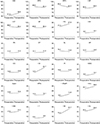
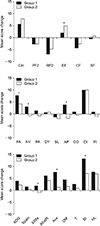
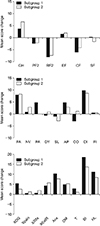
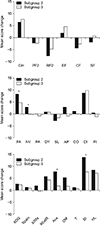
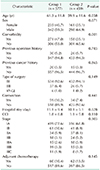
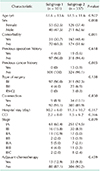
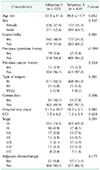




 PDF
PDF ePub
ePub Citation
Citation Print
Print



 XML Download
XML Download